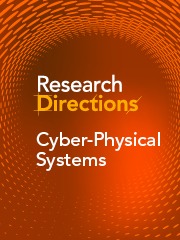Context
There has been a rapid rise of interest in the potential of digital twins to transform a vast range of Cyber-Physical System (CPS) applications, from national infrastructure to surgical robots. But what frameworks, methods and tools are needed to create and maintain digital twins on which we can depend?
Digital twins are virtual replicas of real-world systems. Unlike traditional models, data and control flows couple a digital twin to the CPS of interest and must remain up to date as the CPS evolves. The twin can influence or control the CPS itself. It is not a substitute for the CPS. However, it adds value by providing analytics, visualisation or other capabilities, allowing the twin’s users to make better-informed decisions about interventions. These include preventive maintenance, response to accidental or malicious events and reconfiguration and redesign.
This digital twin vision is attractive. However, for a twin to merit the reliance we place on it, we need frameworks, methods and tools that systematically address the full range of systems’ engineering activities. We must produce evidence that adds to our confidence that a twin is fit for purpose. Digital twins for CPSs need multi-disciplinary models and analytic services, raising significant challenges: maintaining sufficient fidelity to the evolving CPS, time delays, noise in communications to and from the twin, interactions with other systems and human operators and the need for CPS elements and environments to evolve.
In this research question, we welcome contributions to the systematic engineering of trustworthy digital twins supporting CPSs to provide additional value for their users. Examples include, but are not limited to, frameworks, methods and tools for the following:
-
Systems engineering for dependable digital twins of CPSs.
-
Architectures for dependable digital twins.
-
Support for CPS operation in environments outside our control.
-
CPS anomaly detection in digital twins.
-
Addressing noise and timing delays in twin-CPS communications.
-
Composing diverse digital twins in systems-of-systems and their impact on dependability.
-
Ensuring dependability, including security and safety, of digital twins and digital twin-enabled systems.
-
Determining when to enable a CPS to be autonomous and when to rely on humans to take decisions.
-
Coping with real-time data for simulation when carrying out “what-if” scenarios.
-
Ensuring consistency between models of CPSs at different levels of abstraction inside a DT and automatically choosing the best one for the desired analysis.
We want to measure progress in answering this question. We welcome suggestions from the community for a set of public CPS case studies as benchmark problems. As a starting point, we propose a simple “hello world” case study that has proved helpful in illustrating digital twin features: an incubator. We believe the CPS community will benefit from arranging a scientific event to discuss how to establish additional and more complex curated CPS case studies to measure progress.
How to contribute to this Question
If you believe you can contribute to answering this Question with your research outputs, find out how to submit in the instructions for authors (https://www.cambridge.org/core/journals/research-directions-cyber-physical-systems/information/author-instructions/preparing-your-materials). This journal publishes results, analyses, impact papers and additional content such as preprints and “grey literature”. Questions will be closed when the editors agree that enough has been published to answer the Question so before submitting, check if this is still an active Question. If it is closed, another relevant Question may be currently open, so do review all the open Questions in your field. For any further queries, check the information pages (https://www.cambridge.org/core/journals/research-directions-cyber-physical-systems/information/about-this-journal) or contact this email ([email protected]).
Competing interests
The authors declare none.




